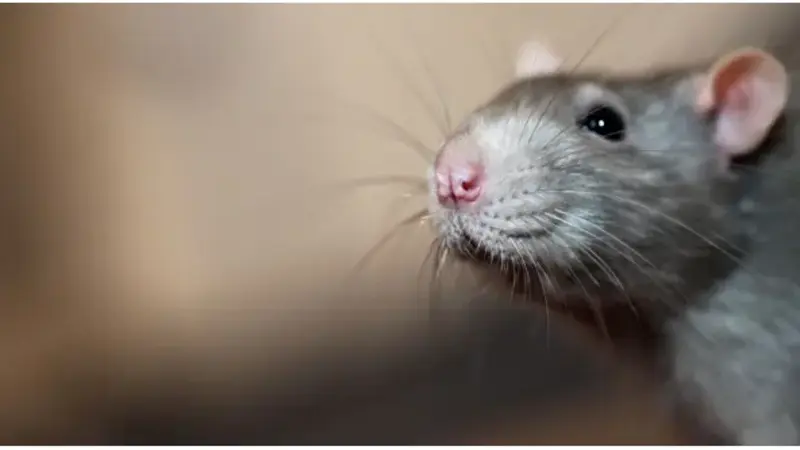Rats in your basement can lead to significant health and structural issues. Preventing rats in basement areas requires proactive measures that address entry points and food sources. By understanding these pests’ habits, you can take effective steps to deter them before they become a problem.
Start by inspecting your basement for gaps, cracks, or holes that rats might use to enter. Sealing these openings keeps rats out and helps maintain a more energy-efficient home. Additionally, proper food storage, clutter management, and cleanliness can drastically reduce the likelihood of attracting these unwelcome visitors.
Establishing a prevention plan can save you time, money, and stress. Implementing simple strategies now ensures your basement remains safe and clean, free from rodent infestations.
Understanding Rat Behavior and Entry Points
Rats are persistent pests that seek food, water, and shelter. Knowing their behavior and common entry points can help prevent them from invading your basement.
Common Access Areas for Rats
Rats can enter your basement through various access points. They can squeeze through gaps as small as half an inch. Common access areas include:
- Cracks in Foundation: Look for fractures around the base of your home.
- Wall Voids: Inspect for openings in walls that lead to drainage systems or other voids.
- Ventilation Openings: Ensure your vents are properly screened and sealed.
- Pipes and Utilities: Gaps where pipes enter your home can provide entry.
Regularly inspect these areas and seal any openings with durable materials like steel mesh or caulk. These measures are essential for rodent-proofing your basement.
Rat Habitats and Nesting Preferences
Rats prefer dark, hidden spaces that provide safety and warmth for nesting. Common habitats include:
- Behind Appliances: Dishwashers and water heaters offer secluded areas.
- In Clutter: Packed boxes or other items can create a nesting environment.
- Crawl Spaces: These areas often remain undisturbed, providing ideal shelter.
- Insulation: Rats may burrow into insulation for warmth.
To discourage nesting in your basement, keep the area clean and decluttered. Store items in sealed containers and close off potential nesting sites. This will significantly reduce the likelihood of attracting rats to your basement.
Comprehensive Rat Prevention Strategies

Effective prevention methods are key to keeping your basement rat-free. For the best results, consider both immediate actions and long-term strategies.
Long-Term Rat Prevention Solutions
To deter rats from entering your basement, invest in long-term solutions. Regular maintenance is crucial, including sealing cracks and crevices in the foundation, walls, and floors. Use materials like caulk or steel wool to block entry points.
Landscaping plays a vital role as well. Trim trees and shrubs that overhang your home to eliminate potential nesting sites. To discourage nesting, opt for hardscaping like gravel instead of mulch around your home’s perimeter.
In addition, professional monitoring services should be considered in areas like Garland. A proactive approach can help identify potential threats before they become a problem.
Secure Waste Management Practices
Effective waste management is essential to preventing rats. Garbage should always be stored in sealed containers with tight-fitting lids, and the bins should be positioned away from the basement entrance.
When composting, ensure your compost bin is rodent-proof. Also, regularly check and maintain the cleanliness of your storage areas.
If you have pets, keep pet food secured and avoid leaving it overnight. Use metal containers for birdseed and pet food to minimize access.
These secure waste management practices will reduce the food sources that attract rats.
Utility and Structural Sealant Applications
Inspect your basement for gaps around utility lines, pipes, or vents. Sealing these areas with high-quality sealants can effectively block rodent entry.
Utilize mesh screens on vents and ensure that air ducts are well sealed. This not only prevents rat entry but also improves energy efficiency.
Consider using spray foam insulation in gaps and cracks. This material is effective for sealing larger openings.
Regular inspections will help you catch new vulnerabilities. By staying vigilant, you can maintain a rat-free environment in your basement.
Effective Rat Control Methods

Implementing effective rat control methods in your basement is crucial for preventing infestations. Choosing the right repellents and utilizing professional services can secure your basement from rat infestations in Garland.
Choosing the Right Rat Repellents
Selecting the appropriate rat repellents can significantly reduce the likelihood of infestations. Consider natural options like peppermint oil, which can deter rats due to its strong scent. Use cotton balls soaked in peppermint oil in areas of potential entry.
Commercial repellents are also available. Look for products containing ingredients such as citronella or ammonia. When using these, follow the manufacturer’s instructions for safe and effective application.
Combine repellents with physical barriers. Seal any cracks or gaps in walls, doors, and vents. This will create a fortified environment that discourages rats from entering.
Professional Rat Control Services
Engaging professional rat control services offers an effective solution for severe infestations. These specialists possess the expertise to identify the source of the problem and implement appropriate strategies.
A typical process involves thoroughly inspecting your basement to locate entry points. Professionals will then recommend a tailored treatment plan. This may include sealing entry points and setting traps or bait.
Additionally, many companies provide follow-up services to ensure long-term protection. Regular maintenance checks can secure your basement against rat infestations, offering peace of mind.
Maintenance and Monitoring
Regular maintenance and monitoring in your basement are crucial to prevent rats from taking up residence. Regularly checking and understanding warning signs will help you maintain a pest-free environment.
Regular Inspection Checklists
A detailed inspection checklist is vital for identifying potential entry points and nesting areas. Schedule inspections at least monthly, focusing on critical areas such as:
- Foundation cracks: Inspect for any visible gaps or cracks in the foundation.
- Window screens: Ensure all screens are intact and free of holes.
- Vents and pipes: Check that vents and pipes are properly sealed to prevent access.
In addition, ensure that your basement is clutter-free, as debris can provide shelter for rodents. Pay special attention to food storage areas, and keep all food items sealed in durable containers. Regularly inspecting insulation and corners for droppings or shredded materials can also highlight signs of rodent activity.
Identifying Signs of Rat Activity
Recognizing the signs of rat activity early can save you time and resources. Look for the following indicators:
- Droppings: Small, dark, and oval-shaped droppings are a common sign of rodent presence.
- Gnaw marks: Inspect wood, plastic, and electrical cables for signs of gnawing.
- Nests: Check for nests made from shredded paper or fabric, often found in hidden areas.
Also, be aware of any unusual scratching or squeaking noises, particularly at night. Installing cameras can help monitor these sounds discreetly. Keeping a vigilant eye and logging your findings will aid in sustaining a rat-free environment. If you suspect a problem, consider contacting Critter Stop at (214) 234-2616 for a free inspection. Critter Stop has a fantastic reputation and online customer reviews because it provides high-quality work and great customer service.



